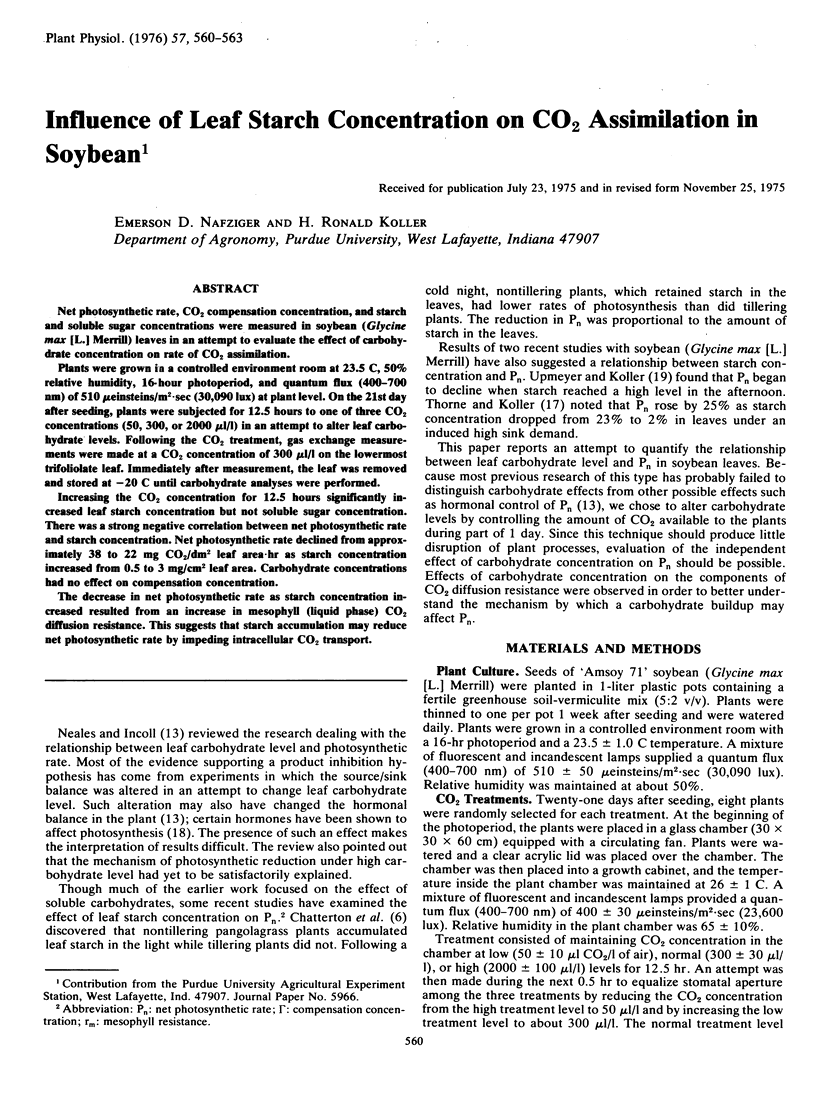Abstract
Net photosynthetic rate, CO2 compensation concentration, and starch and soluble sugar concentrations were measured in soybean (Glycine max [L.] Merrill) leaves in an attempt to evaluate the effect of carbohydrate concentration on rate of CO2 assimilation.
Plants were grown in a controlled environment room at 23.5 C, 50% relative humidity, 16-hour photoperiod, and quantum flux (400-700 nm) of 510 μeinsteins/m2·sec (30,090 lux) at plant level. On the 21st day after seeding, plants were subjected for 12.5 hours to one of three CO2 concentrations (50, 300, or 2000 μl/l) in an attempt to alter leaf carbohydrate levels. Following the CO2 treatment, gas exchange measurements were made at a CO2 concentration of 300 μl/l on the lowermost trifoliolate leaf. Immediately after measurement, the leaf was removed and stored at −20 C until carbohydrate analyses were performed.
Increasing the CO2 concentration for 12.5 hours significantly increased leaf starch concentration but not soluble sugar concentration. There was a strong negative correlation between net photosynthetic rate and starch concentration. Net photosynthetic rate declined from approximately 38 to 22 mg CO2/dm2 leaf area·hr as starch concentration increased from 0.5 to 3 mg/cm2 leaf area. Carbohydrate concentrations had no effect on compensation concentration.
The decrease in net photosynthetic rate as starch concentration increased resulted from an increase in mesophyll (liquid phase) CO2 diffusion resistance. This suggests that starch accumulation may reduce net photosynthetic rate by impeding intracellular CO2 transport.
Full text
PDF



Selected References
These references are in PubMed. This may not be the complete list of references from this article.
- Bravdo B. A. Decrease in net photosynthesis caused by respiration. Plant Physiol. 1968 Apr;43(4):479–483. doi: 10.1104/pp.43.4.479. [DOI] [PMC free article] [PubMed] [Google Scholar]
- Egelstaff P. A. British high flux beam reactor. Nature. 1970 Oct 24;228(5269):324–328. doi: 10.1038/228324a0. [DOI] [PubMed] [Google Scholar]
- Thorne J. H., Koller H. R. Influence of assimilate demand on photosynthesis, diffusive resistances, translocation, and carbohydrate levels of soybean leaves. Plant Physiol. 1974 Aug;54(2):201–207. doi: 10.1104/pp.54.2.201. [DOI] [PMC free article] [PubMed] [Google Scholar]
- Upmeyer D. J., Koller H. R. Diurnal trends in net photosynthetic rate and carbohydrate levels of soybean leaves. Plant Physiol. 1973 May;51(5):871–874. doi: 10.1104/pp.51.5.871. [DOI] [PMC free article] [PubMed] [Google Scholar]


